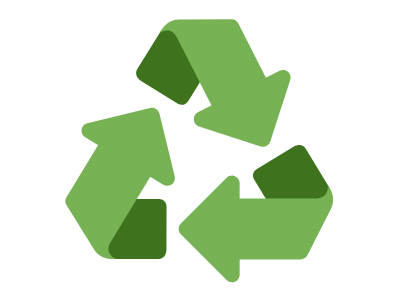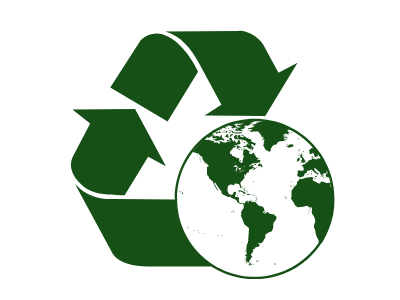What Are PCR and PIR Packaging Materials?
Curious about PCR and PIR packaging materials? In a world where sustainability is becoming ever more prevalent, that is no surprise.
If you are like most companies, you are looking for sustainable packaging solutions to some extent or another. Maybe you are looking for recyclable packaging materials.
Then again, you might be looking for information about biodegradable packaging. Perhaps you are looking for ways to recycle plastics that your local recycling center can't recycle.
Regardless of what brought you here today, you are interested in learning more about PCR (post-consumer recycled) and PIR (post-industrial recycled) packaging materials.
You have probably seen the terms PCR and PIR popping up in newsletters, emails, websites, or social accounts from some of the manufacturers and distributors that you use.
But, you are new to these items, and you don't fully grasp what they are or what they mean. You would like to understand these terms better as they may help you source more sustainable packaging materials.
Today, we will explain what PCR and PIR packaging materials are and the benefits of using these packaging supplies.

What Are PCR Packaging Materials?
PCR stands for post-consumer recycled. PCR packaging is made from previously used consumer packaging materials that have been recycled to form new packaging supplies.
This means these materials are made of plastics that were purchased by consumers, used, and then disposed of in a single-stream or municipal recycling facility.
Many companies are beginning to use PCR packaging materials to meet sustainability goals mandated from within their organizations or by their customers.
Both consumers and companies like PCR packaging materials as it helps them make less of an impact on the natural environment.

What Are PIR Packaging Materials?
PIR stands for post-industrial recycled. PIR packaging supplies are made from waste or used plastic packaging materials. These are materials that have never made it to the consumer and are created as byproducts from the manufacturing process.
Today, many companies are using PIR packaging materials to package their products. These materials are made from used or waste materials that the manufacturer or their clients produce.
For example, various stretch film manufacturers will collect used or waste stretch films from their clients and recycle them, turning them into new stretch films.
In some cases, you can actually make a profit from selling your used stretch film to stretch film recycling companies. But, in order to get paid for your used stretch films, you must adequately sort and bale your used films.
And you must collect a high enough volume to qualify for a stretch film pick up by these stretch film recycling companies. Each stretch film recycling company will require a specific amount of film for pick up to qualify for a purchase.
Each stretch film recycler will have a different minimum volume of properly sorted and baled film that will qualify you for a pick-up and a paycheck.
Some stretch film recycling companies will pick up your unsorted and unbaled films for recycling. However, if the stretch films are not baled and sorted, they will not pay you for these materials as they will have to sort and bale them.
In these situations, the stretch film recycling company will have to sort and bale the film, which incurs a cost to them. So, if you want to get your used and waste stretch film recycled and get paid for recycling it, you must properly sort and bale it beforehand.
Want to design your packaging to be more sustainable?
Who Uses PCR and PIR Packaging Materials?
In an effort to be more earth-friendly, many companies today are using PCR and PIR recycled packaging materials to package their products.
This allows both the company and their customers to produce less of an impact on our planet earth. Many consumers appreciate products that are packaged in PCR or PIR packaging materials.
In this respect, you may be able to generate more product sales by using PCR or PIR packaging materials for environmentally conscious people who are looking for products packaged in these materials.
Businesses that use PCR and PIR packaging materials to package their products include food, electronics, and various other consumer goods manufacturers.
Are PCR and PIR Packaging Materials Right For You?
If sustainability and environmental friendliness are important to your company and consumers, PCR and PIR packaging materials may be right for you.
Companies whose clients are passionate about sustainability may find that they can sell more products to their consumer base if they package their products in PCR and PIR packaging materials.
This makes for a win-win situation where your consumers feel good about their purchase from a sustainability standpoint while you can sell more products.
Where Can You Buy PCR and PIR Packaging Materials?
Are you interested in buying PCR and PIR packaging materials? Would you like to learn more about the PCR and PIR packaging materials that are available today?
If you answered yes to either of the questions above, you would want to consider speaking with one of our in-house packaging experts.
They will be able to help you source the appropriate PCR and PIR packaging materials for your sustainable product packaging needs and requirements.
About Nathan Dube
As the Digital Marketing Specialist at Industrial Packaging, I am honored to create content for such a phenomenal company and work with one of the greatest teams in the Packaging Industry. Whether creating a video, writing blog posts or generating other pieces of content and multimedia, I am always excited to help educate and inspire our prospects and clients to reach their highest potential in regards to their packaging processes and needs.




